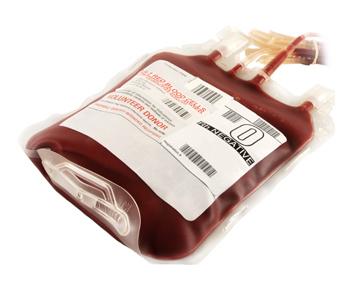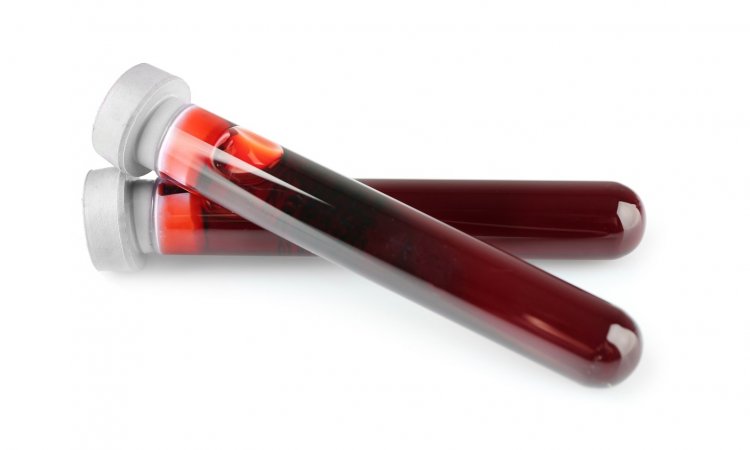what color is venous blood
Oxygenated arterial blood is bright red while dexoygenated venous blood is dark reddish-purple. After reanastomoses the output was significantly.
Can Humans Blood Be Any Other Color Than Red Quora
The colors of arterial and venous blood are different.
. Hemoglobin is bound to CO2. Subcutaneous fat only allows blue light to penetrate skin all the way to veins so this is the color that is reflected backLess energetic warmer colors are absorbed by skin before they can travel that far. Similar Pantone Color name Information Color Schemes Light Darkshades Tones Similar Colors Preview the color and download Photoshop swatch and solid color background image.
For that reason blood returning to the heart and lungs also may have a dark red blue or purple appearance. This Hb4O2 complex is Bright red in colour. This colour difference is due to O2 is sp2 hybridised molecule where CO2 is.
Haptoglobin added and pending. Arterial blood travels with a high pressure which results an uneven flushing of blood. These thick blood clots cut off oxygen flow thus affecting the color of the blood.
Over 95 of hemoglobin in arterial blood is in the oxy-Hb form. Blood is always red. Venous blood is dark red and not blue.
The difference is color results from the electronic state of the iron ion. Skin absorbs blue light. In contrast hemoglobin in the venous blood has lost a lot of oxygen so venous blood is dark-red almost blackish in colour.
We investigated the use of blood color brightness and blood gas variables for discriminating arterial from venous puncture during cardiopulmonary resuscitation cpr. The color blood with hexadecimal color code 8a0303 is a medium dark shade of red. Since arterial blood is rich in oxygen the color of the blood is bright red.
Dark red and thick blood indicates low oxygen carrying blood. The blue appearance of surface veins is caused mostly by the scattering of blue light away fro. However venous blood flows in a low pressure that causes.
The studys aims were to determine if discrimination using Po2 is. Blood leaving the heart called arterial blood is pumped from the lungs back to the heart by the pulmonary artery and it contains a large amount of oxygen for delivery around the body. Dark-colored blood called venous blood is dark because it has become deoxygenated after having traveled through the body before returning to the heart drained of oxygen.
The more oxygen blood has the brighter red it appears. Three patients who developed venous thrombosis were salvaged by reanastomoses of the thrombosed vein. Color space information Venous Blood Red similar Color 422f35.
The wound exposes the bone. Veins look blue because light has to penetrate the skin to illuminate them blue and red light being of different wavelengths penetrate with different degrees of success. The arterial blood is bright red in color and the venous blood is blackish red in color.
The wound is deep large or embedded with an object. Usually blood clots are comprised of heavy proteins and thus are thick. Deoxygenated blood is darker due to the difference in shape of the red blood cell when oxygen binds to haemoglobin in the blood cell oxygenated versus does not bind to it deoxygenated.
However hepatic portal vein contains the blood that is highest in glucose and other nutrients. However the pulmonary veins carry oxygen rich. The red color appears because of the oxygenation process.
As the blood circulates the body and oxygen is removed by tissue the blood grows darker in appearance. It owes its color to hemoglobin to which oxygen binds. Arterial blood is rich in oxygen and nutrients.
This Hb4CO2 complex is Bluish red in colour. The venous ph was ok 732 and I thought of hemolysis but no cbc had been sent urine dip at home no biliriubin and urine did not change colors left outside. Its bright red at this point.
Arteries have muscular walls rather than thin walls like veins but they likely would appear. The colors of arterial and venous blood are different. Hemoglobin is bound to O2.
Public Domain Image source. The level in venous blood averages between 50-80. The veins themselves are not blue but are mostly colorless.
Blood also absorbs light so blood vessels appear dark. The wound involves the eyes or abdomen. Venous blood is high in carbon dioxide urea and other waste products compared to arterial blood.
Human blood is never blue. The color of human blood ranges from bright red when oxygenated to a darker red when deoxygenated. Venous blood is bluish because it is oxygen depleted which results in a blue color.
The veins that carry the venous blood are just under the skin hence this is the blue blood you see. Similar Pantone Color name Information Color Schemes Light Darkshades Tones Similar Colors Preview the color and download Photoshop swatch and solid color background image. It is the blood in the veins that gives them color.
Blood is always red actually. The oxygen-rich blood is then pumped out to your body through your arteries. The bleeding spurts out quickly which is a sign of arterial bleeding.
The colors of arterial and venous blood are different. Blood thickness and viscosity is caused due to the presence of heavy proteins in the blood. The arterial blood is carried in the arteries which are deep in the body and not seen through the skin.
But venous blood is rich in metabolic wastes such as carbon dioxide and urea. Furthermore the blood in human veins is also not blue. Blood pumped directly from the heart is oxygen rich and bright red.
Arterial blood and venous blood are two types of blood found in the blood vessels of a closed circulation system. In the RGB color model 8a0303 is comprised of 5412 red 118 green and 118 blue. Venous Blood Venous blood moves through.
Blood that has been oxygenated mostly flowing through the arteries is bright red. The arterial blood is bright red in color and the venous blood is blackish red in color. The venous pH correlates well with the arterial pH.
Venous blood is obtained for lab work by venipuncture also called phlebotomy or by finger prick for small quantities. Color space information Venous Blood Red similar Color 3e2f34. Before reanastomosis abnormal arterial waveform decreasing flow volume output and a lack of venous blood flow were observed in the patients who developed venous thrombosis.
It is bright red in color while venous blood is dark red in color but looks purple through the translucent skin.

Reliability Of Blood Color And Blood Gases In Discriminating Arterial From Venous Puncture During Cardiopulmonary Resuscitation The American Journal Of Emergency Medicine

Why Are Veins Blue Science Questions With Surprising Answers
Difference Between Arterial And Venous Blood Definition Characteristics Function

Pin On Patient Information Pages

Venous And Arterial Blood Difference Stock Vector Illustration Of Capillaries Closeup 148151776
Why Does My Blood Change Colors It S Purple When It S Out Of Me Shouldn T It Be Red Quora

The Basic Anatomy Of The Heart Venous Blood Enters Through The Download Scientific Diagram

Vena Wikipedia La Enciclopedia Libre Human Circulatory System Arteries And Veins Circulatory System

Does Capillary Blood Yield The Same Venous Blood Quality Results
Why Is An Artery Red And Veins Blue Quora

How Do Venous And Arterial Blood Differ

Human Circulatory System Of Arteries And Veins Poster Zazzle Com Human Circulatory System Arteries And Veins Circulatory System

Recommendations On Venous Blood Sampling Healthcare In Europe Com





